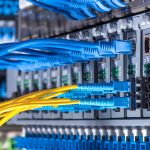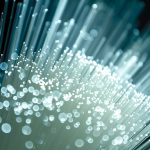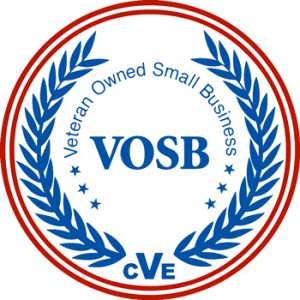How Does Fiber Optic Cabling Work?
CKC Data Solutions installs fiber optic cabling and air blown fiber optic cabling at businesses across Southwest Missouri. Fiber optics are vital to modern communications, particularly when it comes to data transmission across long distances. Today’s blog from CKC Data Solutions answers the question, “How does fiber optic cabling work?”
Composition of Fiber Optic Cabling
Individual fiber optic cables are comprised of very thin strands of glass or plastic less than 1/10th the thickness of a human hair. Then, manufacturers wrap that inner layer with cladding, or thicker glass that serves a very specific purpose.
Pulses of Light
Data transmits along fiber optic cabling thanks to pulses of light. The cladding wrapped around the inner layer allows light to bounce off the walls of the glass as opposed to letting the light signal degrade due to leaking out through the sides of the cable.
Manufacturing
As you might expect, the individual fibers must be made of pure silicon (the main ingredient of glass) down to the micron level during the manufacturing process. A single strand of fiber comes from glass soot particles deposited on a very thin rod in a highly controlled pattern. To do this, companies use tiny blue flames as they tweak the composition of gases traveling through the flames. The glass develops specific properties as the glass cools. Think of it as 3-D printing on a microscopic scale in a very precisely controlled environment.
Versus Electrical Signals in Copper Wire
Light travels much faster than electricity, which makes fiber optic cabling a relevant choice for facilities that need fast extremely data transmission over long distances. Glass is one of the purest media around to transmit light, compared to copper wire for electricity. Ethernet cables work better over short distances, and they use thin copper wires bundled together in groups of eight. Each line handles a particular transmission. However, the signal is slower.
Data Transmission Levels
Fiber optic cabling routinely carries 100 to 200 gigabits per second of data in modern data centers. However, newer fiber optic systems can carry 800 gigabits per second. Facebook and Nokia claim to have fibers that can carry up to 13 terabits per second. These companies are experimenting with a trans-Atlantic cable that can carry up to 32 terabits per second.
For comparison, Netflix recommends a transmission speed of 25 megabits per second for streaming Ultra HD (4K) video. 100 gigabits per second, the low-end of fiber optic transmission, is 4,000 times more data (1 gigabit is 1,000 megabits). Imagine streaming 4,000 movies at once on fiber optic cabling!
Fiber Optic Cabling Installation by CKC Data Solutions
CKC Data Solutions specializes in fiber optic cabling, air blown fiber optic cabling, network cabling, IP cameras, audiovisual solutions, and wireless solutions for commercial facilities throughout Southwest Missouri. Contact CKC Data Solutions or call (417) 812-5251 for more information on what we can do for your telecommunications and security needs!





